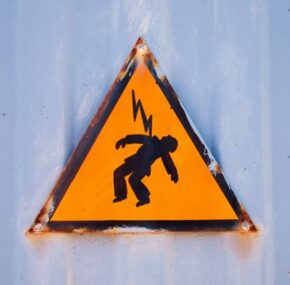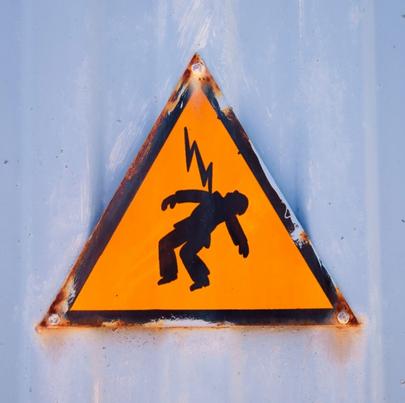Electrical hazards are found in most workplaces and identifying and correcting unsafe habits and conditions can reduce the number of serious burns, shocks, and electrocutions that occur every year. Between 2004 and 2013, 1,881 employees lost their lives to electrical incidents in the workplace. Over 400 of those deaths occurred with less than 200v of electrical charge. Familiarity with the dangers of electricity can help encourage safe work habits and create a safer workplace.

Where Electrical Hazards Reside
Electricity can cause several hazards in the workplace. Contact with live electrical parts can burn the skin and cause electrical shock. Faults in electrical systems can lead to fires which put the workers at risk. Electricity can ignite an explosion or fire when around combustible materials as well, creating yet another risk. Wet and damp conditions or conditions involving flammable or combustible materials increase the risk of an electrical problem.
In the workplace, electrical hazards are commonly found in the circuit breaker panel. Missing covers or incorrect covers allow arc flashes, which can cause electrocution. Missing punchouts also leave the box vulnerable. They create a pathway for electricity to hit a worker nearby. Damaged electrical cords and wiring are yet another vulnerability in many workplaces. Finally, temporary power and lighting setups, which are common in construction work, create vulnerabilities that can lead to electrical injuries commonly seen by Chicago workers compensation lawyers.
Employer Responsibilities for Electrical Hazards
Employers are legally responsible for providing a safe work environment and that includes ensuring safety around electricity. Employers must ensure their equipment is properly maintained and all extension cables or flexible leads are undamaged when used. They also must ensure employees use the right connections and couplers and all electrical installations are properly performed. Employers are also responsible for ensuring that their employees use safe practices at all times, including never overloading outlets or using electrical equipment in the wrong manner.
Employers can reduce the risk of electrocution and other electrical injuries by insisting on proper grounding. Adequate wiring in good repair is also critical, as is avoiding moisture around electrical work. Equipment and tools need to be constantly examined and replaced as needed. With these safety measures in place, all employees will be safer when working around electricity.







